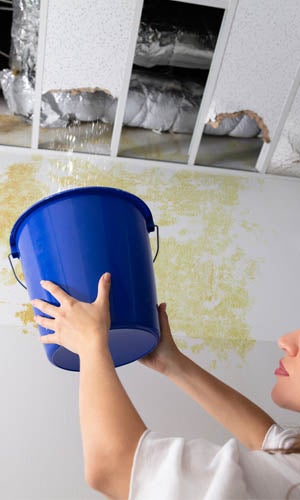In this article down the page you can find a bunch of reliable insights related to Hacks to detect leaks.

Early discovery of leaking water lines can mitigate a possible disaster. Some little water leaks might not be noticeable.
1. Analyze the Water Meter
Every house has a water meter. Inspecting it is a proven way that aids you discover leakages. For starters, shut off all the water resources. Guarantee nobody will certainly flush, utilize the tap, shower, run the washing equipment or dishwashing machine. From there, go to the meter and also watch if it will transform. Because no person is utilizing it, there ought to be no motions. That shows a fast-moving leakage if it relocates. If you discover no changes, wait an hour or two and check back once again. This implies you may have a slow leak that can also be below ground.
2. Examine Water Usage
Examine your water bills and also track your water usage. As the one paying it, you ought to notice if there are any type of discrepancies. If you detect sudden changes, in spite of your intake being the same, it suggests that you have leakages in your plumbing system. Keep in mind, your water costs need to drop under the same variety every month. An abrupt spike in your bill suggests a fast-moving leakage.
On the other hand, a constant increase monthly, despite the exact same behaviors, reveals you have a slow-moving leakage that's additionally gradually intensifying. Call a plumber to extensively examine your home, particularly if you feel a warm location on your floor with piping underneath.
3. Do a Food Coloring Test
When it comes to water intake, 30% comes from toilets. If the shade somehow infiltrates your bowl throughout that time without flushing, there's a leakage between the storage tank and also dish.
4. Asses Exterior Lines
Don't neglect to inspect your outside water lines too. Needs to water seep out of the connection, you have a loosened rubber gasket. One little leakage can waste heaps of water and spike your water bill.
5. Evaluate as well as Analyze the Circumstance
House owners should make it a routine to check under the sink counters as well as also inside cabinets for any type of bad odor or mold and mildew growth. These two warnings show a leak so prompt interest is called for. Doing regular evaluations, also bi-annually, can conserve you from a significant issue.
If you know your home is already old, keep a careful eye on your heating systems, pipes, pipelines etc. Check for discolorations and compromising as many devices as well as pipes have a life expectancy. They will certainly additionally normally degrade because of tear as well as wear. If you believe dripping water lines in your plumbing system, don't await it to intensify. Call an expert plumber as soon as possible so you don't wind up with an awful mess in your home.
Early discovery of leaking water lines can reduce a prospective calamity. Some tiny water leaks might not be noticeable. Inspecting it is a proven means that helps you discover leaks. One small leak can lose bunches of water and spike your water bill.
If you suspect leaking water lines in your plumbing system, do not wait for it to escalate.
WARNING SIGNS OF WATER LEAKAGE BEHIND THE WALL
PERSISTENT MUSTY ODORS
As water slowly drips from a leaky pipe inside the wall, flooring and sheetrock stay damp and develop an odor similar to wet cardboard. It generates a musty smell that can help you find hidden leaks.
MOLD IN UNUSUAL AREAS
Mold usually grows in wet areas like kitchens, baths and laundry rooms. If you spot the stuff on walls or baseboards in other rooms of the house, it’s a good indicator of undetected water leaks.
STAINS THAT GROW
When mold thrives around a leaky pipe, it sometimes takes hold on the inside surface of the affected wall. A growing stain on otherwise clean sheetrock is often your sign of a hidden plumbing problem.
PEELING OR BUBBLING WALLPAPER / PAINT
This clue is easy to miss in rooms that don’t get much use. When you see wallpaper separating along seams or paint bubbling or flaking off the wall, blame sheetrock that stays wet because of an undetected leak.
BUCKLED CEILINGS AND STAINED FLOORS
If ceilings or floors in bathrooms, kitchens or laundry areas develop structural problems, don’t rule out constant damp inside the walls. Wet sheetrock can affect adjacent framing, flooring and ceilings.
https://www.servicemasterbyzaba.com/blog/how-to-detect-water-leakage-in-walls/

We were made aware of that report on Top leak detection hacks through a friend on another web page. Remember to take a moment to promote this write-up if you liked it. Thanks a lot for your time. Visit us again soon.